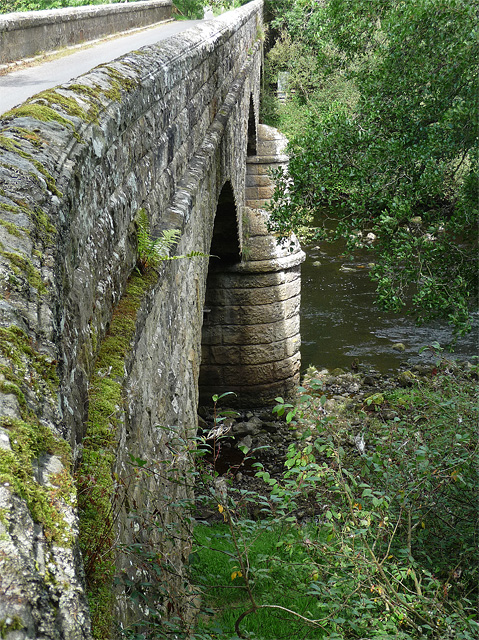Topics > Northumberland > Falstone > Falstone Parish, 1848
Falstone Parish, 1848
FALSTONE, a parish, in the union of Bellingham, N. W. division of Tindale ward, S. division of Northumberland, 9½ miles (W.N.W.) from Bellingham, and 25½ (N.W. by N.) from Hexham; containing, with the townships of Plashets and Wellhaugh, 560 inhabitants. This place, anciently Fast-Stone, was a chapelry in the very extensive parish of Simonburn, which was divided by act of parliament, in 1811, into six parishes, whereof this is one. It is bounded on the north-west by Scotland, is 12 miles in length, and comprises by computation 57,700 acres of wild, mountainous, and heathy land, affording good pasturage for sheep, and of which some portions, especially near the river, are a rich alluvial soil; the quantity of arable is very small. The North Tyne, over which a handsome and substantial stone bridge of three arches was erected in 1844, has its source in a morass, and in its progress through the parish receives the Kielder and numerous other tributary streams; in the same morass is the source of the river Liddel, within a few yards only of the boundary of Scotland, into which it takes its course. Coal, of a good bituminous quality, is abundant, and two collieries are in operation for the supply of the district; freestone is quarried for building purposes, and there is also limestone. The living is a rectory, in the patronage of the Governors of Greenwich Hospital, with a neat and convenient glebe-house: the tithes have been commuted for £228. The church, a handsome structure with a tower, was rebuilt in 1823. There is a place of worship for Presbyterians. In the neighbourhood are several springs, one of which, near the head of the Tyne, is said to be equally efficacious with those of Gilsland Spa. At the Bells are the remains of a religious building, contiguous to which is a cemetery. A gold coin of the Emperor Cæsar Magnentius Augustus, was found in Dec. 1843, in opening a grave in the churchyard.
Extract from: A Topographical Dictionary of England comprising the several counties, cities, boroughs, corporate and market towns, parishes, and townships..... 7th Edition, by Samuel Lewis, London, 1848.

Co-Curate Page
Well Haugh Township (Falstone), 1848
- WELL-HAUGH, a township, in the parish of Falstone, union of Bellingham, N. W. division of Tindale ward, S. division of Northumberland, 12¼ miles (W.N.W.) from Bellingham; containing 338 inhabitants. It …

Co-Curate Page
Plashetts Township, 1848
- PLASHETS, a township, in the parish of Falstone, union of Bellingham, N. W. division of Tindale ward, S. division of Northumberland, 12½ miles (W.N.W.) from Bellingham; containing 222 inhabitants. This …


Co-Curate Page
Well Haugh Township (Falstone), 1848
- WELL-HAUGH, a township, in the parish of Falstone, union of Bellingham, N. W. division of Tindale ward, S. division of Northumberland, 12¼ miles (W.N.W.) from Bellingham; containing 338 inhabitants. It …








